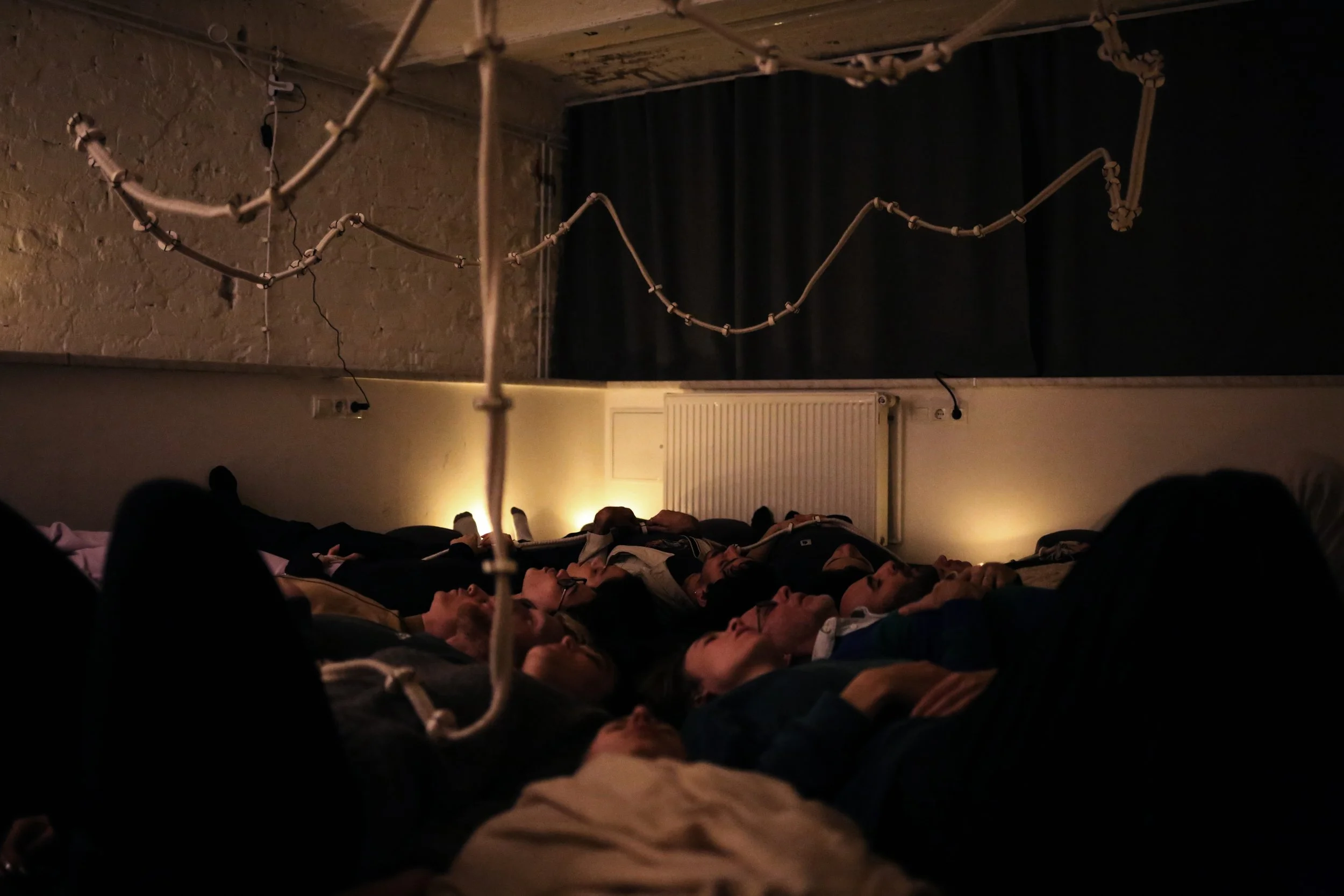THREE BODIES (2025)
Three Bodies examines the relationship between the human body, Earth, and Moon through artworks designed as guides for active meditation. Featuring paintings, sound, and an interactive installation, the exhibition explores shared rhythms and resonances between celestial and human systems. Materials like volcanic sand and calcium, an essential component of skeletons, Earth’s crust, and the Moon’s surface, evoke mutual ancestries across geological time. Meanwhile, moonquake frequencies, adjusted to an audible range, echo bodily rhythms such as deep sleep cycles and resting heart rates, inviting reflection on the body’s relationship to larger patterns. By blending neuroscience, meditation, and somatic practices, the exhibition challenges human-centric perspectives and creates a space to experience interconnectedness through embodiment.
Documentation from the 2025 exhibition at Vorfluter, Berlin, which included a public program featuring a collaborative breathwork session with Gerjet Efken and a planetary sound meditation with Paloma / Zen Chaos, fostering participatory frameworks that deepened sensory engagement.
Photos upstairs gallery and activations: Giulia Garetto. Photos downstairs gallery (installation): Vorfluter.


















